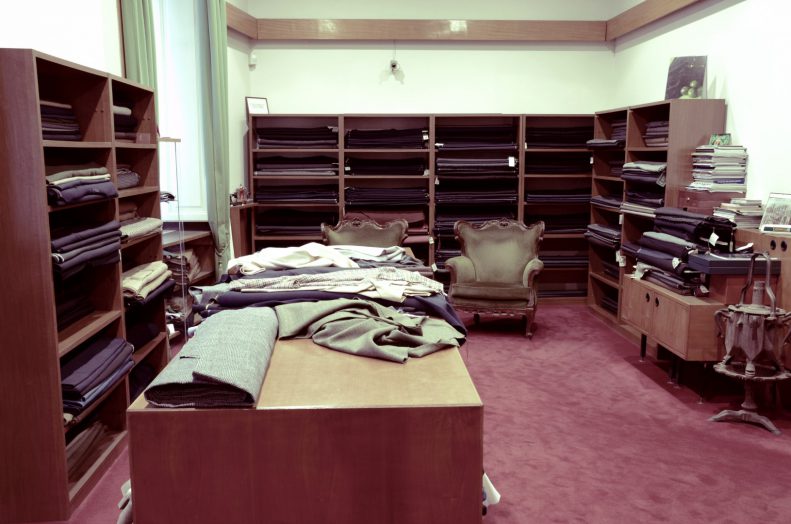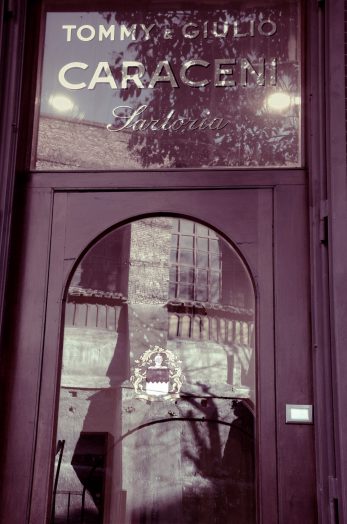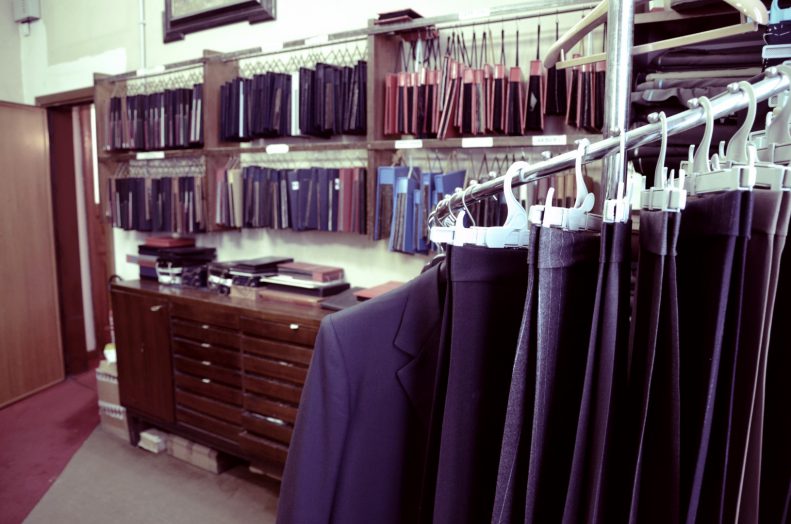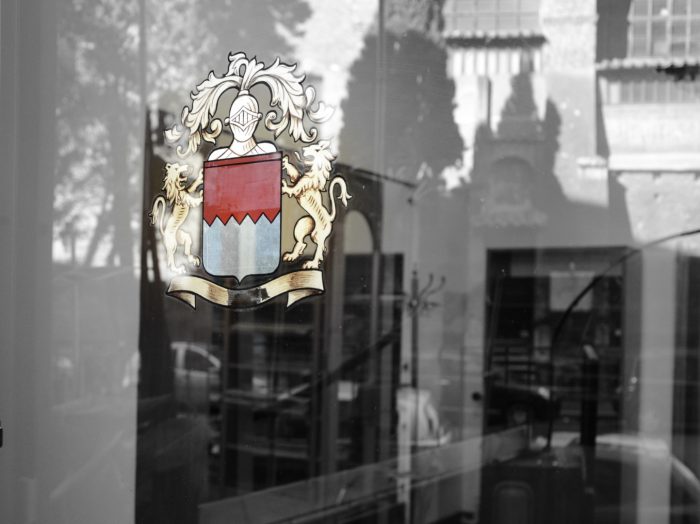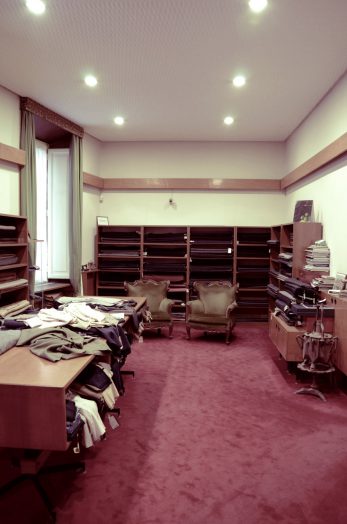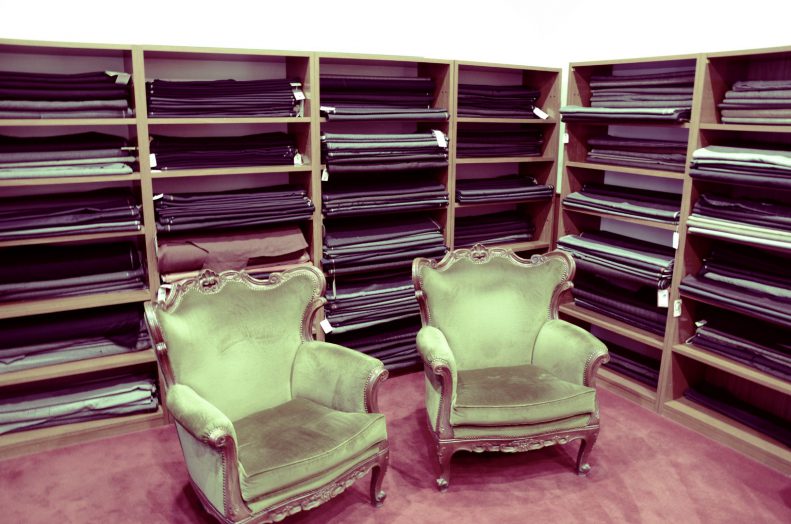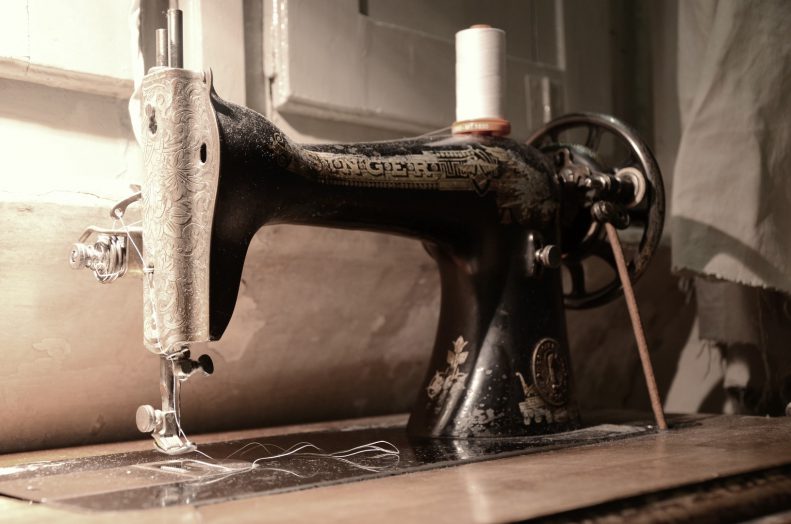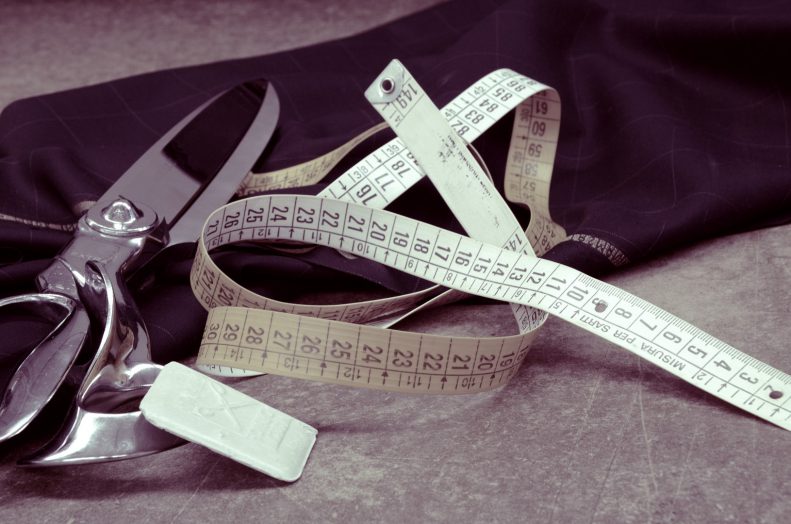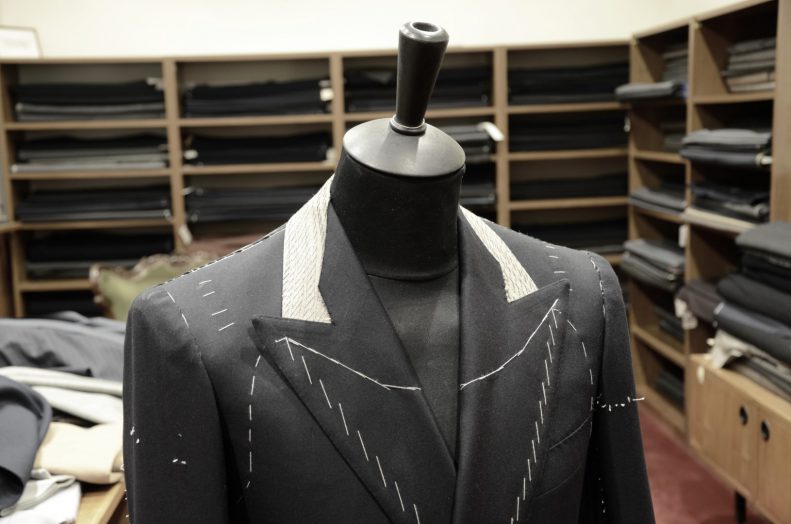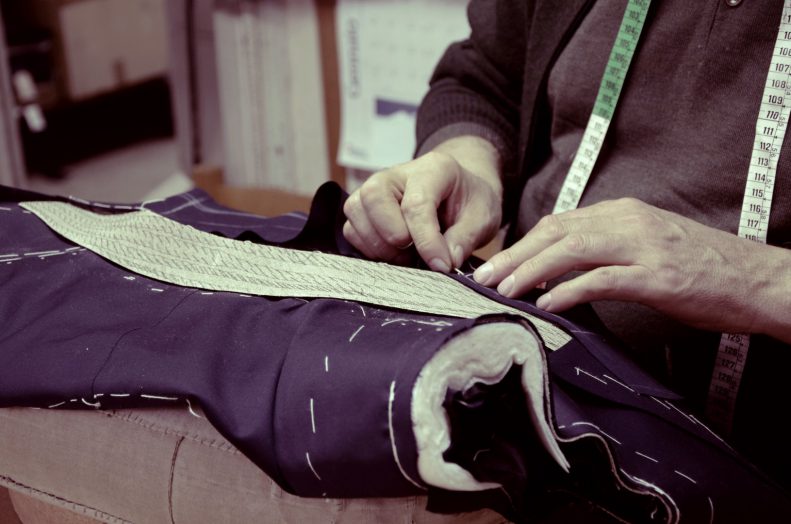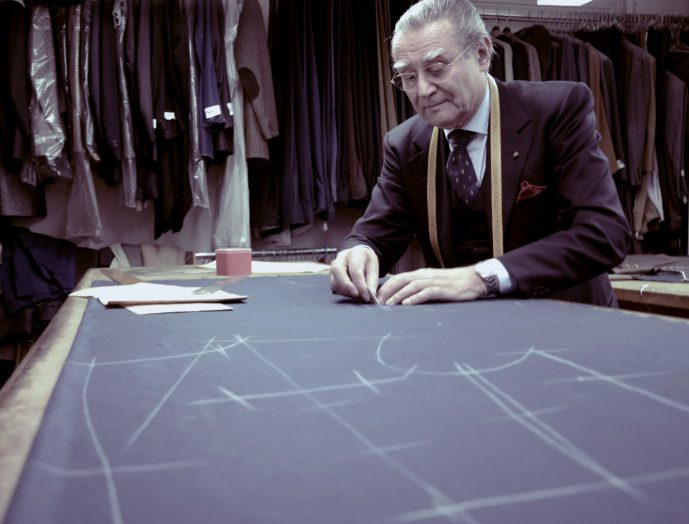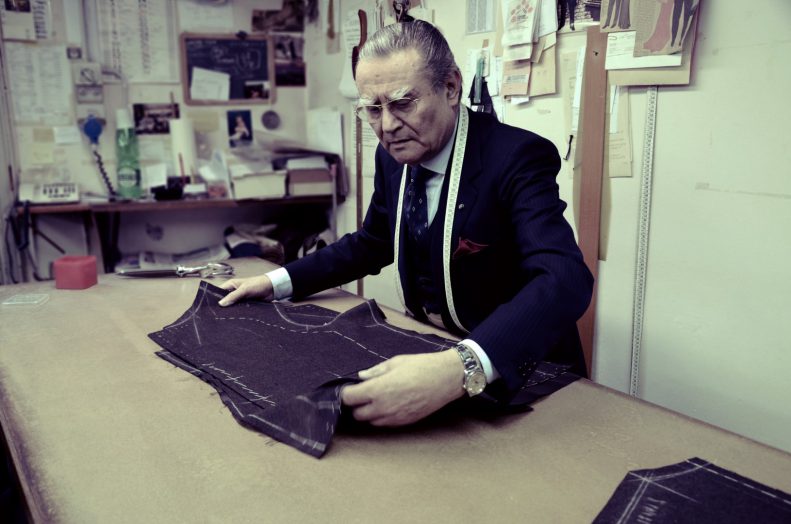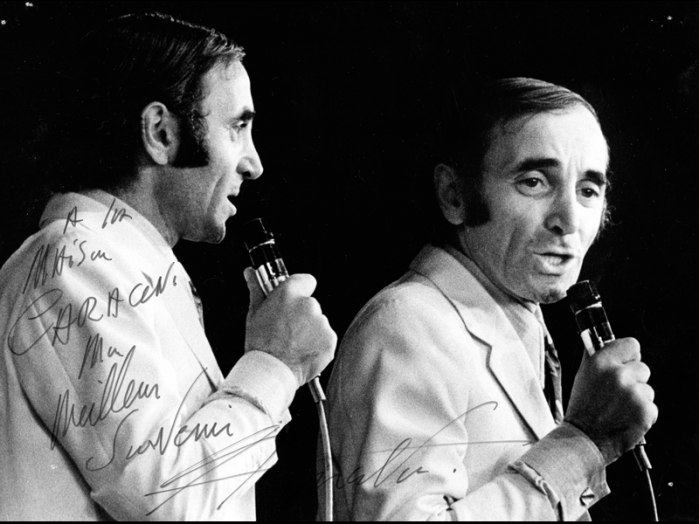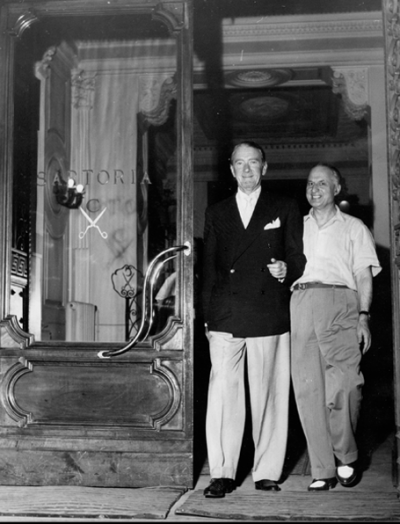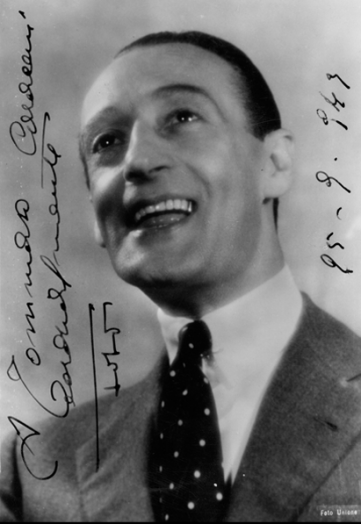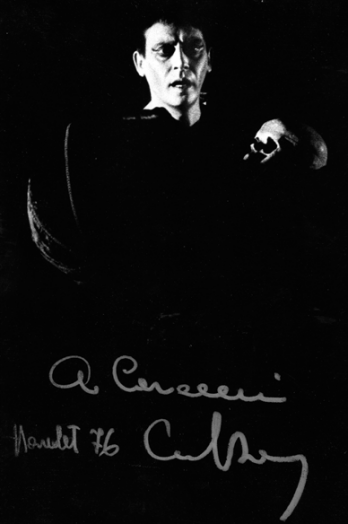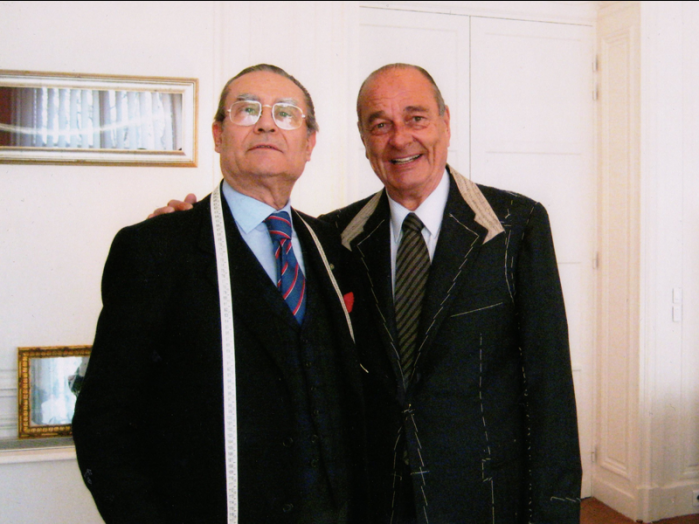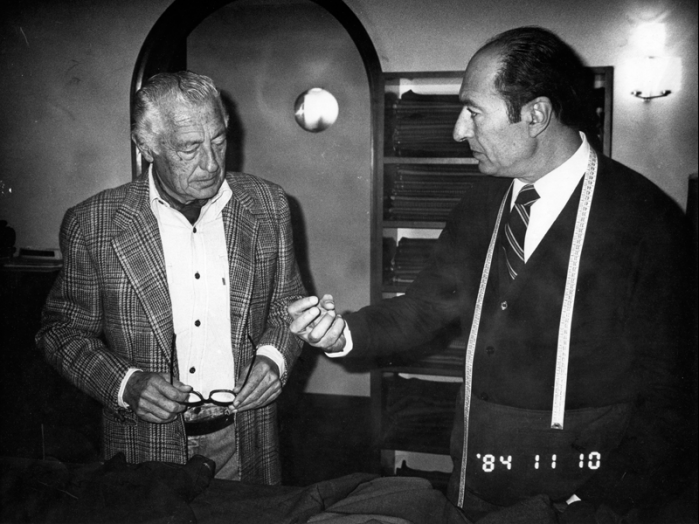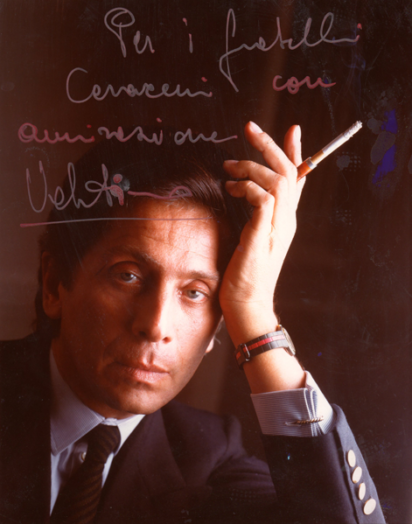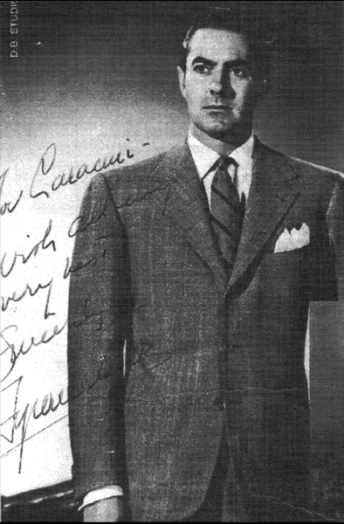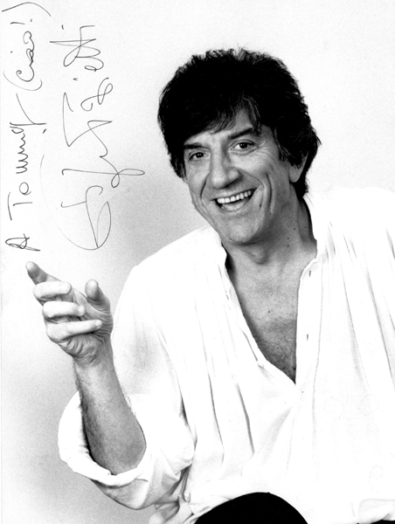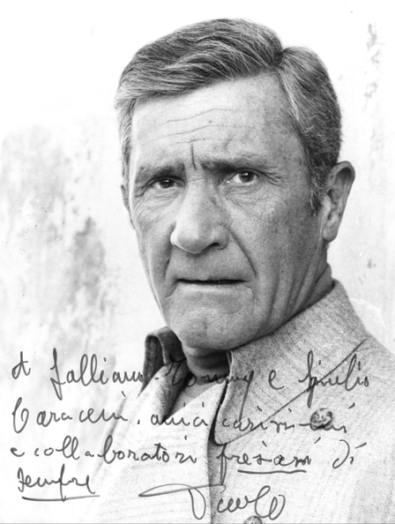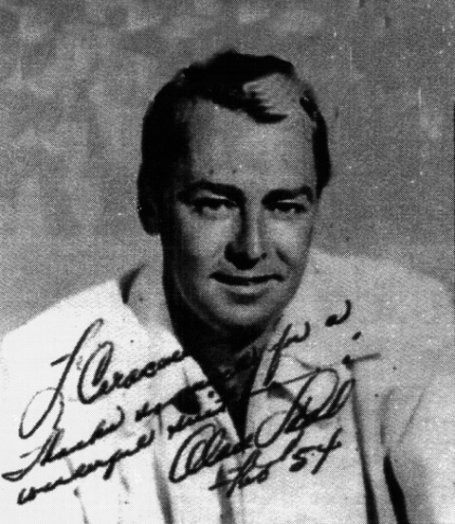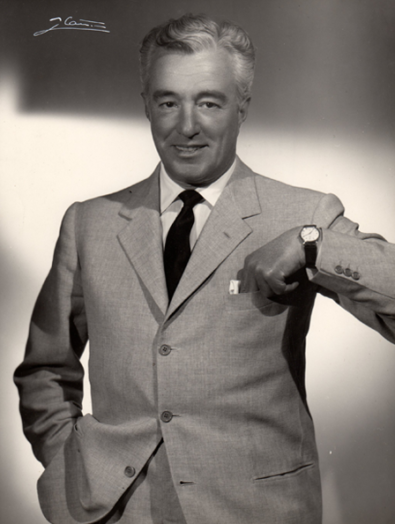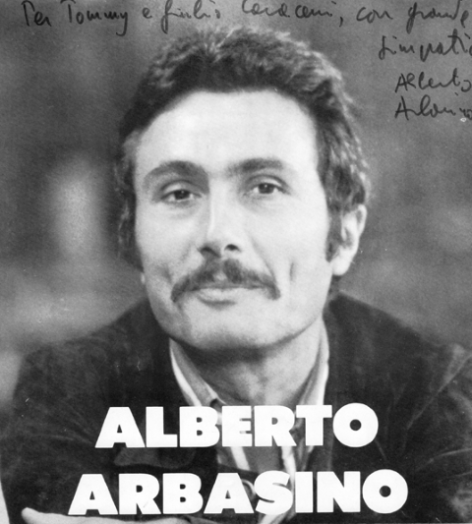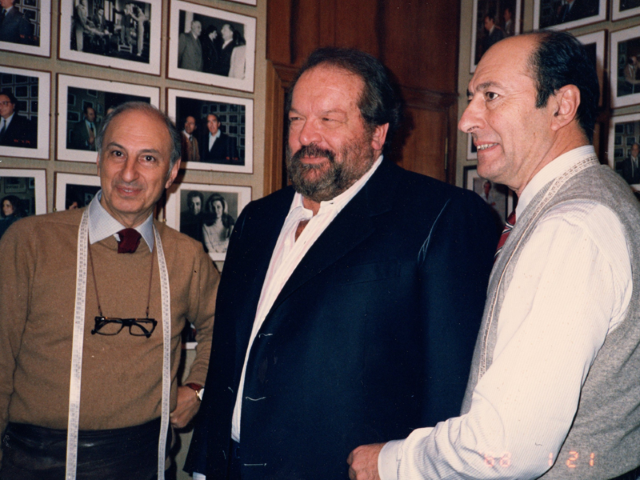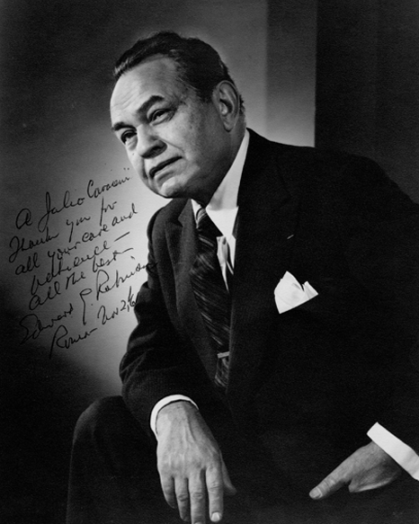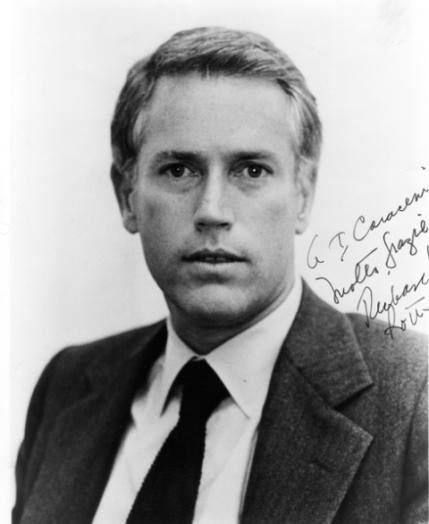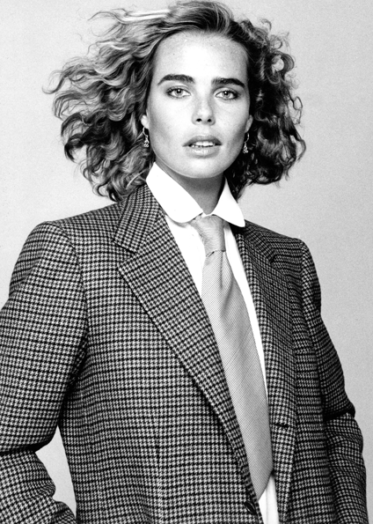They were the first years of the twentieth century when Domenico Caraceni, fifteen years old, left his native town in Abruzzo, Ortona a Mare, to go to work at a tailor in Rome. His talent, perfection of the cut and elegance of the lines that seemed modeled on the body conquered everybody. After a first attempt in 1913, failed because of the war, Domenico opened his own tailor’s shop in 1926 in Rome, in Via Boncompagni and called his brother Augusto, also a tailor, to work in his atelier. Later the youngest of the Caraceni, Galliano, reached them and thanks to his charisma he took successfully care of the administration and the public relations. The tailor’s shop was booming and personalities such as Gary Cooper, Douglas Fairbank, Tyrone Power, Cary Grant, the Prince of Wales, as well as bankers and industrialists became regular customers. So two new ateliers were opened: one in Paris on rue de Champs Elysée, which was assigned to Augusto ,appointed master tailor, to make known to the French elite the line and the refined Caraceni style, and one in Naples entrusted to the charism of Galliano.
However, the two new tailor’s shops were short-lived. Following World War II, Augusto was forced to leave Paris and the atelier was closed. The same fate was then for the Neapolitan shop, overshadowed by the popularity and the amount of work of the Roman atelier, so Galliano returned to Rome to help his brother Domenico. After the war Domenico opened a new shop in Milan, in Piazza San Babila, and there Augusto with force and tenacity started from scratch, getting to regain a significant customer base in a short time. When Domenico prematurely died, the ownership of tailor’s shops (Rome and Milan) passed to his son Augustarello who, never having been a tailor, could not adequately manage the activities. Without the figure of Domenico, who with his passion and personality had been personally involved in all the ateliers so far, the brothers started their own business.
2000
Augusto opened his own couture in Milan in Via Fatebenefratelli, where he continued his activities, followed by his son Mario, who led the tradition of the Caraceni to these days. Galliano did the same thing in Rome in 1963 opening a new tailor’s shop in via Campania together with his sons Tommaso (Tommy) and Giulio, who until that moment, in addition to having learned the trade “at home”, accumulated experience in other major fashion houses: in 1948 in Paris, first at his uncle then at Primavera and Paul Portes, in 1952 in Genoa at Evangelista and in 1954 in London at the famous Kilgour, at Davies & Son and at French & Stanbury, the oldest tailor of Savile row. So also the tailor’s shop Tommy & Giulio Caraceni became the natural consequence of the great tradition started by Domenico. After several attempts Augustarello and his daughters had no choice but to sell the brand Domenico Caraceni. The tradition has remained rather unchanged over time in Augusto’s workshop in Milan and in Tommy and Giulio’s one in Rome.
today
To this day, despite the passing of time and the long epic of the family, the story continues thanks to the love and tradition for a craft in which technical and artistic spirit come together and express themselves through inimitable and easily recognizable lines. A tradition that continues to be passed, thanks to the new generations, so that there are still keepers of those almost alchemical secrets that have made the story of a unique style and elegance.
Gallery
Measuring & Cutting
It is certainly a long history that a Caraceni suit carries within itself before gettting to dress up the customer for which it was designed and sewn. Of course it all starts with taking measurements and the choice of the kind of suit to realize and consequently of the fabrics to be used, but not only: the most important part for the success of a bespoke suit is perhaps the one where the eye of the taylor manages to penetrate the personality of the customer to capture that something that everyone wants to convey through their style and combine it with the lines and the footprint that can make a Caraceni suit always recognizable. Once selected, the fabric is wet to prevent warping during processing and later ironed; so it reaches the hands of the cutter who, thanks to technique and experience, transforms the measures taken in thin chalk lines, creating a model conceived and marked from scratch specifically for our customer. The various pieces that will make the suit are “cut off”, that is cut leaving large margins for shifting, then are passed into the hands of our master tailors for the preparation of the first fitting.
canvas
The Canvas
Canvases shaped on the model of the front quarters of the jacket and layers of reinforcements shaped for the chest of the customer are stitched together making the internal “body” of the jacket. The fronts are then basted and joined on the canvases, giving a first impression of the base form and lines.
first fitting
The first fitting
The first fitting consists only in a subsequent full basting of the suit without any finishing work (pockets, lapels, linings, etc.). The first fitting is carried out in order to highlight large scale flaws and being only an acknowledgment of the model derived from measurements of the customer, it is necessary only for the first suit.
second fitting
The second fitting
The suit is “taken apart” and released “flat” so that the correct model can be marked with the utmost precision. At this point the fronts of the jacket begin to take shape thanks to hours of patient and precise craftsmanship. Almost all handcrafted stitches and very few seams with vintage sewing machines become the beating heart of the suit; cautious ironings with gestures of the past with unobtainable cast-iron irons, five kilos heavy, shape the lines that are to go with who will wear it in every movement. The hips, the shoulders, the sleeves and the neck, now more refined, are re-basted. During the second test, minor perfectioning corrections are defined and the customer can decide the final “impression” of his own suit.
finished suit
Finished suit
The basted pieces are put back “on plan” to mark the final corrections and get the paper pattern to use for following suits. Everything at this point is permanently remounted and finished. The attention to detail becomes the ultimate goal of the processing, only for the jacket it can exceed thirty hours. Everything is finished with hand-made buttonholes and the last ironing.
every suit is unique
Every suit is unique
The processing of an entirely hand-made suit it’s a long and fascinating story involving the work of craftsmen able to blend knowledge with technical and manual skills. During its evolution, several hands will work and shape the fabric and this will make impossible to create identical suits. The “imperfection” and the uniqueness of the manufacturing can then be considered as our seal of quality.



